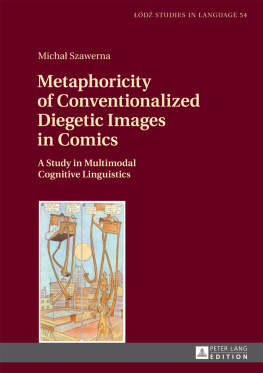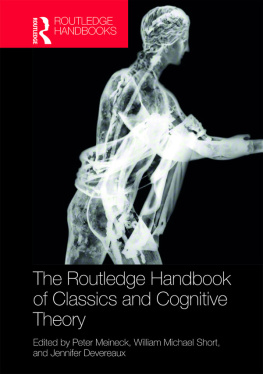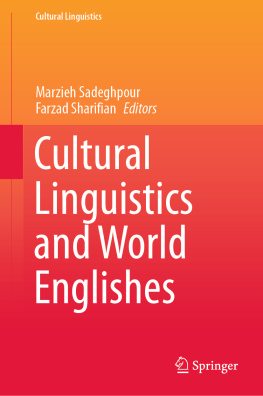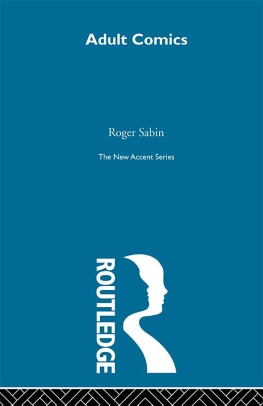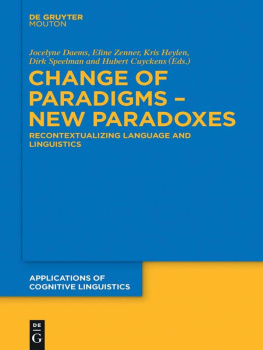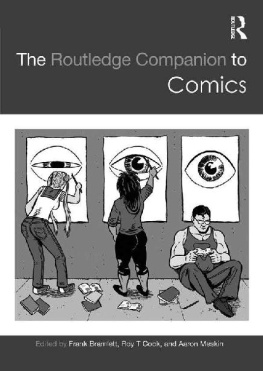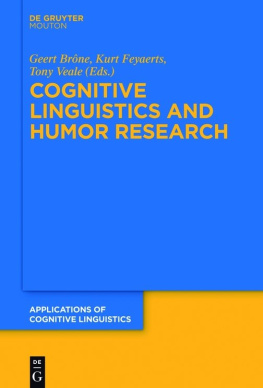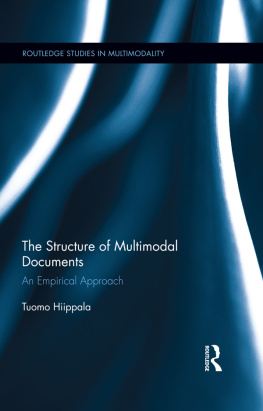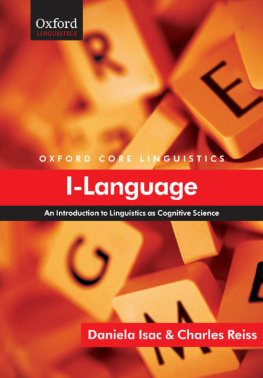Table of contents
Page List
D STUDIES IN LANGUAGE
Edited by Barbara Lewandowska-Tomaszczyk and ukasz Bogucki
Editorial Board
Piotr Cap (University of d, Poland)
Jorge Daz-Cintas (University College, London, England)
Katarzyna Dziubalska-Koaczyk (Adam Mickiewicz University, Pozna, Poland)
Wolfgang Lrscher (Universitt Leipzig, Germany)
Anthony McEnery (Lancaster University, England)
John Newman (University of Alberta, Canada)
Hans Sauer (Ludwig-Maximilians-Universitt Mnchen, Germany)
Piotr Stalmaszczyk (University of d, Poland)
Elbieta Tabakowska (Jagiellonian University, Krakw, Poland)
Marcel Thelen (Zuyd University of Applied Sciences, Maastricht, The Netherlands)
Gideon Toury (Tel Aviv University, Israel)
VOLUME 54
Micha Szawerna
Metaphoricity
of Conventionalized
Diegetic Images
in Comics
A Study in Multimodal
Cognitive Linguistics
Bibliographic Information published by the Deutsche Nationalbibliothek
The Deutsche Nationalbibliothek lists this publication in the Deutsche Nationalbibliografie; detailed bibliographic data is available in the internet at http://dnb.d-nb.de.
Library of Congress Cataloging-in-Publication Data
A CIP catalog record for this book has been applied for at the Library of Congress.
This publication was financially supported by the University of Wrocaw.
Cover image:
Little Nemo in Slumberland by Winsor McCay, 26 July 1908
Reviewer: Micha Post
Printed by CPI books GmbH, Leck.
ISSN 1437-5281
ISBN 978-3-631-67521-2 (Print)
E-ISBN 978-3-631-72376-0 (E-PDF)
E-ISBN 978-3-631-72377-7 (EPUB)
E-ISBN 978-3-631-72378-4 (MOBI)
DOI 10.3726/b11165
Peter Lang GmbH
Internationaler Verlag der Wissenschaften
Frankfurt am Main 2017
All rights reserved.
Peter Lang Edition is an Imprint of Peter Lang GmbH.
Peter Lang Frankfurt am Main Bern Bruxelles New York Oxford Warszawa Wien
All parts of this publication are protected by copyright. Any utilisation outside the strict limits of the copyright law, without the permission of the publisher, is forbidden and liable to prosecution. This applies in particular to reproductions, translations, microfilming, and storage and processing in electronic retrieval systems.
This publication has been peer reviewed.
www.peterlang.com
About the author(s)/editor(s)
Micha Szawerna is Assistant Professor at the Institute of English Studies, University of Wrocaw. His research interests include visual signification, cognitive linguistics, and Peirces sign theory.
About the book
This book offers a cognitive-semiotic approach to metaphoricity of visual representations in static visual narratives referred to as comics. It implements this approach in an exploration of conventionalized visual signs depicting diegetic situations, motion events, sound events, and diverse psychological experiences in such narratives. With his focus on the intersection of comics studies, conceptual metaphor theory, and Charles Sanders Peirces theory of signs, the author analyzes a broad array of attested data retrieved from comics exemplifying various publication formats, generic conventions, and cultural traditions. His exploration situates the metaphoricity of the analyzed visual signs against the backdrop of their overall semiotic makeup and in relation to the metaphoricity of their linguistic counterparts.
This eBook can be cited
This edition of the eBook can be cited. To enable this we have marked the start and end of a page. In cases where a word straddles a page break, the marker is placed inside the word at exactly the same position as in the physical book. This means that occasionally a word might be bifurcated by this marker.
| 13
Comics scholars like Christopher Eklund (2006: 209), Randy Duncan and Matthew J. Smith (2009: vii), and Kent Worcester (2010: 111) concur in the opinion that extensive research on static visual narratives referred to collectively as comics has been developing for several decades, but both Worcester (2010: 111) himself and Jeet Heer and Worcester (2009: xi) point out that the heyday of modern comics scholarship began, roughly speaking, at the turn of the 1980s and 1990s, with the emergence of what Heer and Worcester refer to as the new comics scholarship (2009: xiv). According to Heer and Worcester (2009: xiii), the new comics scholarship marks an important change in contemporary comics studies a change toward research into the formal aspects of comics (Heer and Worcester 2009: xiv), with the focus on revealing the unique capacity of comics exemplifying various publication formats, generic conventions, and cultural traditions to achieve meaning (Heer and Worcester 2009: xiii; original emphasis). The lively dialogue about the capacity of comics for meaning, referred to by Heer and Worcester (2009: xiv) as the formalist turn in the new comics scholarship, was initiated by practicing cartoonists Will Eisner (2008 /1985/), Robert C. Harvey (1994, 1996), and Scott McCloud (1994 /1993/) whose contribution to comics studies, while invaluable insofar as it provided a solid foundation for academic inquiry into comics (Varnum and Gibbons 2001: xiii), was criticized for its lack of an academic orientation, for being removed from the scholarly traditions with which it might best intersect (Beaty and Nguyen 2007: vii).
With a view to systematizing their research efforts, various proponents of the formalist turn framed their accounts of the expressive potential of comics in terms of established theories of meaning, and in a number of cases they singled out Peircean semiotics and conceptual metaphor theory as their analytical frameworks.
Given the sheer scope and intricacy of the theory of signs continually formulated and reformulated by Charles Sanders Peirce throughout his intellectual life, the emphasis placed by this theory on the importance of interpretation to signification (Atkin 2010 /2006/), and its lack of the logocentric bias that has informed semiotic analyses conducted by neo-Saussurians for a good part of the twentieth century (Kwiatkowska 2011: 314316; Jappy 2013: xxi), the choice of Peircean semiotics as the principal framework in which to explore the meaning-making potential of visual signs found in comics seems quite natural. In turn, the application of conceptual metaphor theory to the analysis of the form of comics is motivated on the grounds that this theory offers a principled explanation of the reasons why many non-mimetic signs belonging to the standard expressive repertoire of comics signs representing emotions, thoughts, sounds, movements, etc., in static visual form are intuitively interpreted on first encounter (Miodrag 2013: 196) despite their highly conventionalized, unrealistic form. More specifically, given the central tenet of conceptual metaphor theory whereby metaphor is a general cognitive process that may materialize in different modalities (Mller 2008: 26), it is justified 13 | 14 to hypothesize, as I suggested elsewhere, that the effortlessness with which these non-mimetic signs are interpreted stems, at least in part, from their metaphoricity, that is, from the fact that they instantiate conceptual metaphors that are familiar, albeit at an unconscious level, to creators as well as readers of comics (Szawerna 2014: 92). Put differently, a characterization of non-mimetic visual signs found in comics in terms of conceptual metaphor theory goes at least some way toward accounting for the form of these signs, which is conceived of as motivated by the way in which their meaning is captured in accordance with a range of entrenched conceptual metaphors which have a basis in perceptual, social, and cultural experience.

